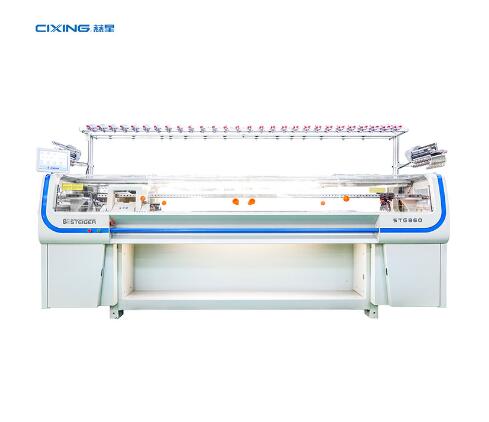The Efficiency and Quality Comparison of Shoe Upper Knitting Machines vs. Traditional Manual Knitting
2024-06-07
In the footwear industry, the evolution of technology has revolutionized the production of shoe uppers. While traditional manual knitting has long been a staple in shoe manufacturing, the introduction of shoe upper knitting machines has brought significant changes in terms of efficiency and quality. Let's delve into how these two methods compare.
Efficiency
Manual Knitting: Traditional manual knitting relies heavily on the skill and experience of the knitter. While it allows for a high level of customization and intricate detailing, it is a labor-intensive process. Each stitch is carefully crafted by hand, which means production speed is relatively slow. Additionally, the output is limited to the number of skilled knitters available.
Shoe Upper Knitting Machine: On the other hand, shoe upper knitting machines are designed to automate the knitting process. These machines use computer-controlled mechanisms to create precise stitches at a significantly faster rate than manual knitting. They can produce large quantities of shoe uppers in a shorter amount of time, significantly increasing production efficiency.
Quality
Manual Knitting: Manual knitting offers a level of quality and attention to detail that is unmatched by machines. Knitters can adjust their technique and tension to create consistent and uniform stitches. This ensures that the shoe upper is not only aesthetically pleasing but also structurally sound.
Shoe Upper Knitting Machine: While machine-knitted shoe uppers may not have the same level of customization as manually knitted ones, they offer consistent quality and accuracy. The machines are programmed to produce precise stitches and patterns, eliminating the human error that can occur during manual knitting. Additionally, the machines can handle complex designs and textures with ease, resulting in shoe uppers that are both visually appealing and durable.
Conclusion
The comparison between shoe upper knitting machines and traditional manual knitting reveals significant differences in efficiency and quality. While manual knitting offers a high level of customization and attention to detail, it is a labor-intensive process that limits production speed and output. In contrast, shoe upper knitting machines automate the knitting process, increasing efficiency while maintaining consistent quality and accuracy.
Ultimately, the choice between manual and machine knitting depends on the specific needs and requirements of the footwear manufacturer. For those seeking high-volume production with consistent quality, shoe upper knitting machines are an excellent choice. However, for those requiring unique customization and intricate detailing, manual knitting may be the preferred method.



